Wordle Art
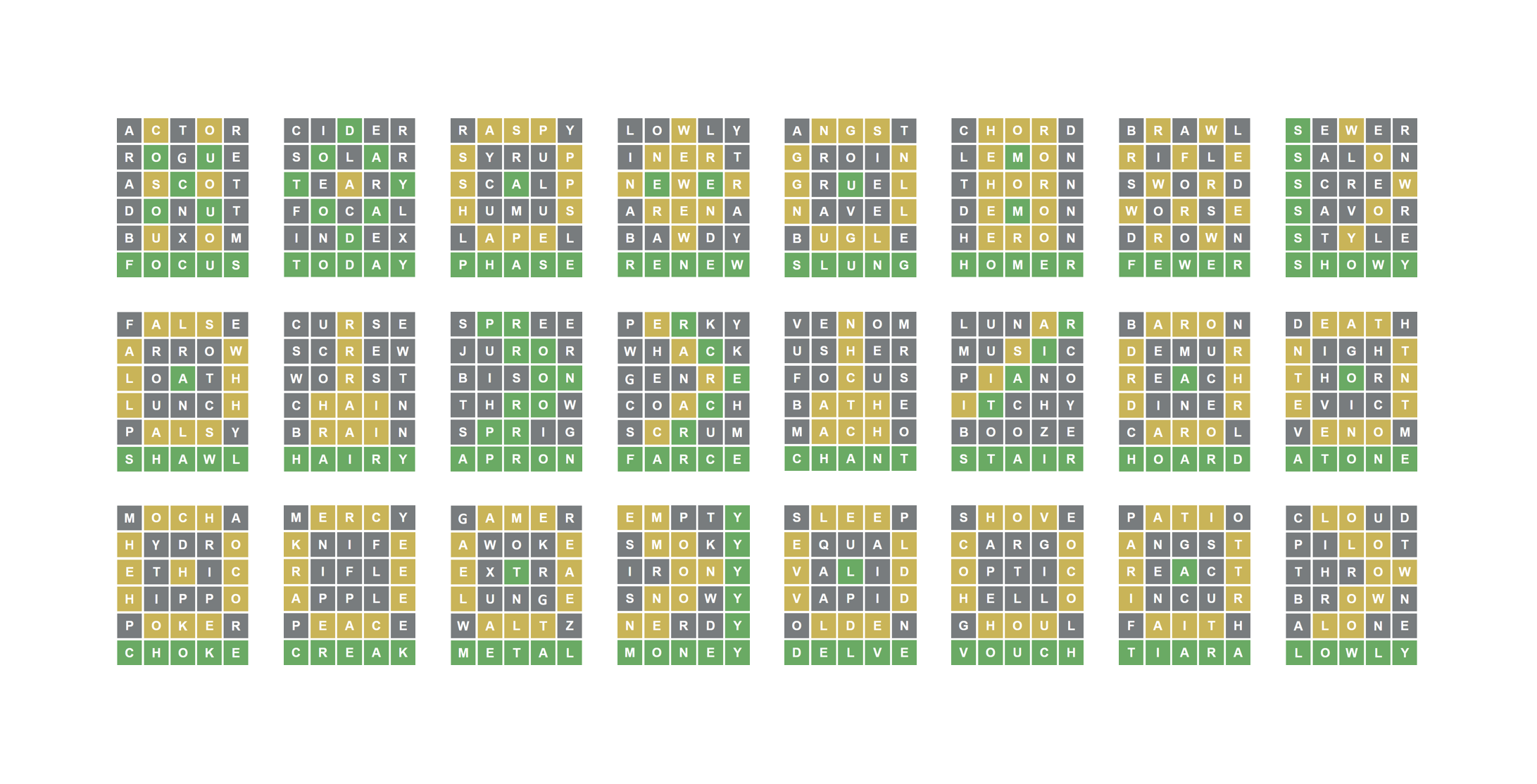
Wordle took the Twitterverse by storm during the winter of 2021-2022. Within a month or two of the game's release in October 2021, millions of people were playing every day, or making fun of those who were. People post their Wordle scores every day, often to brag about how few guesses they needed.
Not me. If minimizing the number of guesses is the goal, I suck at Wordle, because after playing like everyone else for a month or so, I started playing "Wordle Art" instead, meaning that I don't try to solve each day's puzzle efficiently, I try to solve it artfully. I usually use all six guesses to get the answer, although sometimes I use five if that fits the pattern I'm trying to create that day.
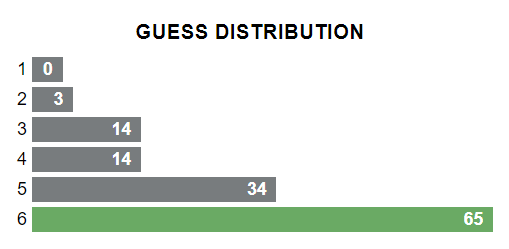
You might be wondering how it's possible to intentionally create a specific pattern in Wordle. The answer is pretty simple: you just need to know the answer ahead of time, and then you can plan a series of words to generate a pattern.
The daily answer to Wordle isn't random. There's a predefined list of words buried in the game's source code, and they just step through that list in sequential order. Here's some Python code that will save a copy of the current word list:
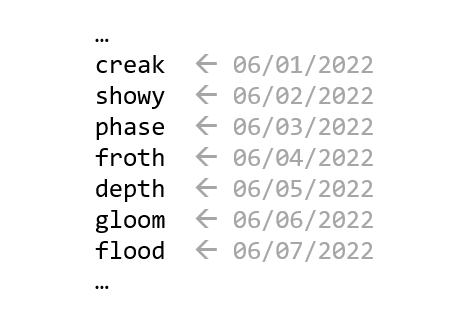
Once you have the word list, you can search for the answer on a known date (say, yesterday's answer) and then step forward to today's answer. That almost always works, but every now and then they'll remove a word and republish the list. When that happens, you just need to re-download a fresh copy of the new list. So far, since the New York Times took over Wordle in early 2022, they've removed a word once every two or three months.
Wordle's word list is more than just the answers: it's also the list of valid guesses. In other words, every guess you make in Wordle has to be a word from the list. There are over 100,000 5-letter words in English, and Wordle only accepts about 2300 of them. Scrabble, on the other hand, uses a list of 9000 valid words. So there are many 5-letter words that you can play in Scrabble but aren't allowed in Wordle.
The other piece of the puzzle for creating Wordle Art is that you need a way to determine which guesses will generate the pattern that you need for each row.
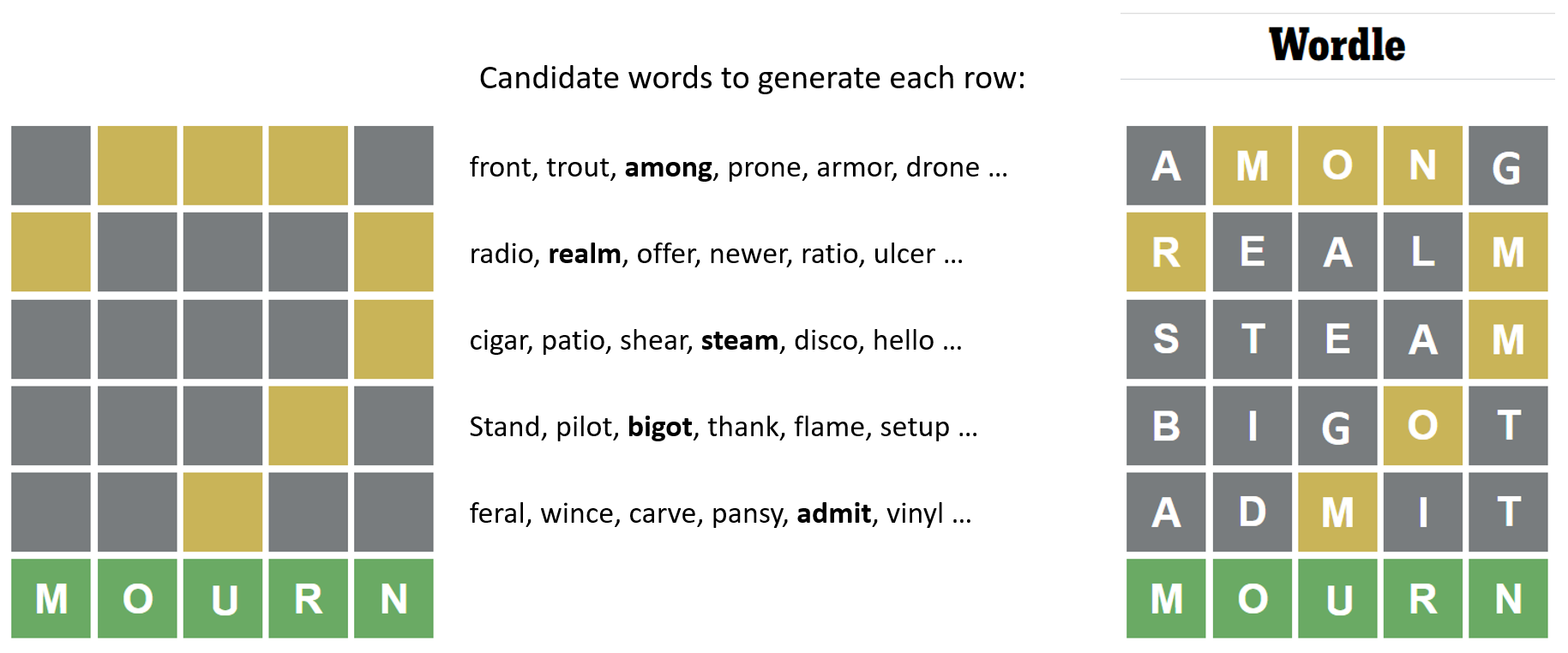
Determining the candidate words for each row can be time-consuming if you're just doing it by trial and error. So I automated it. I wrote a Python function, wordle_guess(), that takes a known answer and a guess and returns the pattern that Wordle will generate for that guess. It took a while to get the edge cases handled correctly, but after a few months of using each day's Wordle to refine the function and create new test cases, I have a tool that consistently Wordle's responses.
It's not very elegant or efficient, but it gets the job done. Using that tool, I can scan through the current Wordle word list and find all the guesses that will generate a desired pattern. The rest of this post shows a few examples of patterns I've created with it.



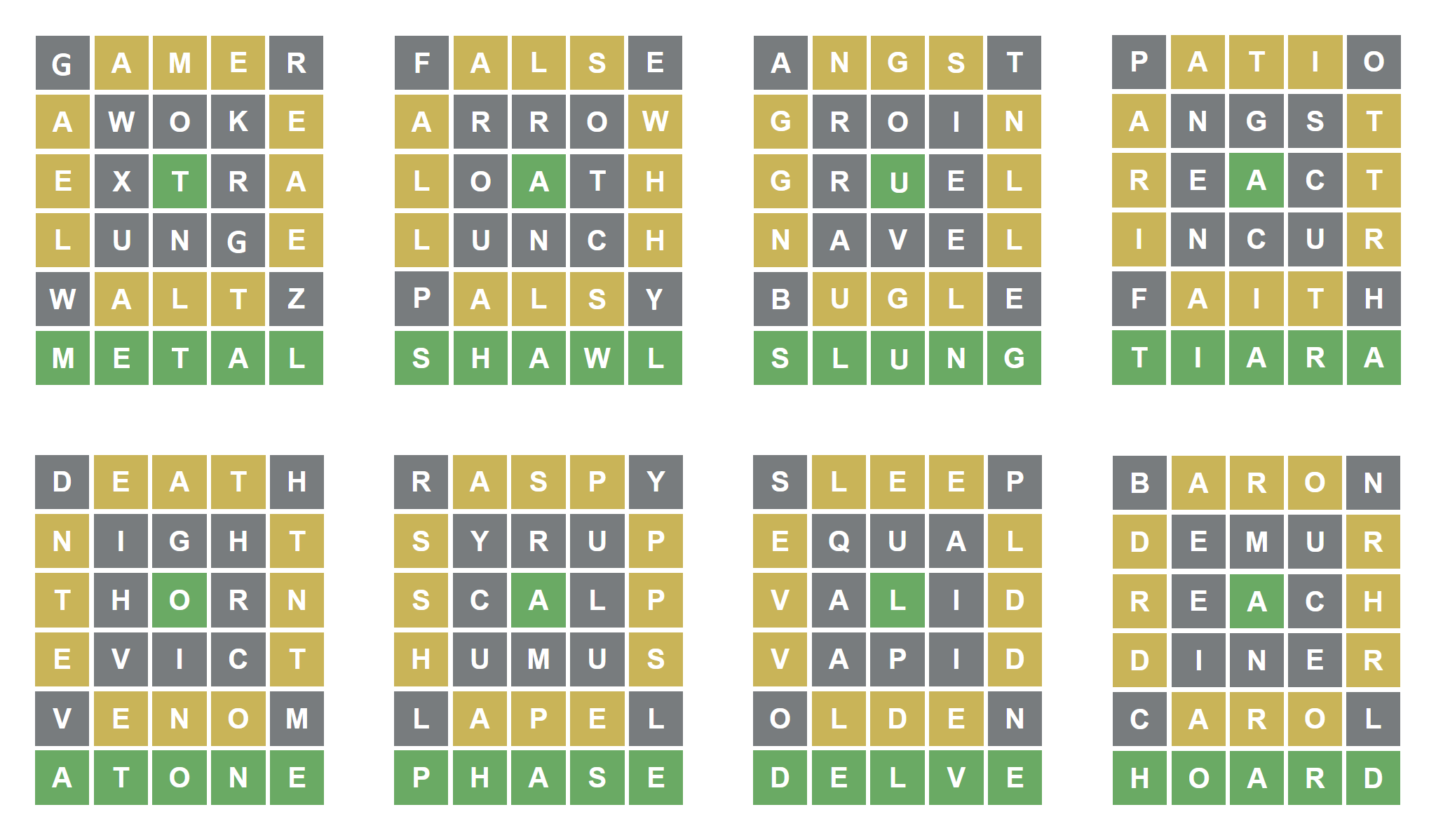
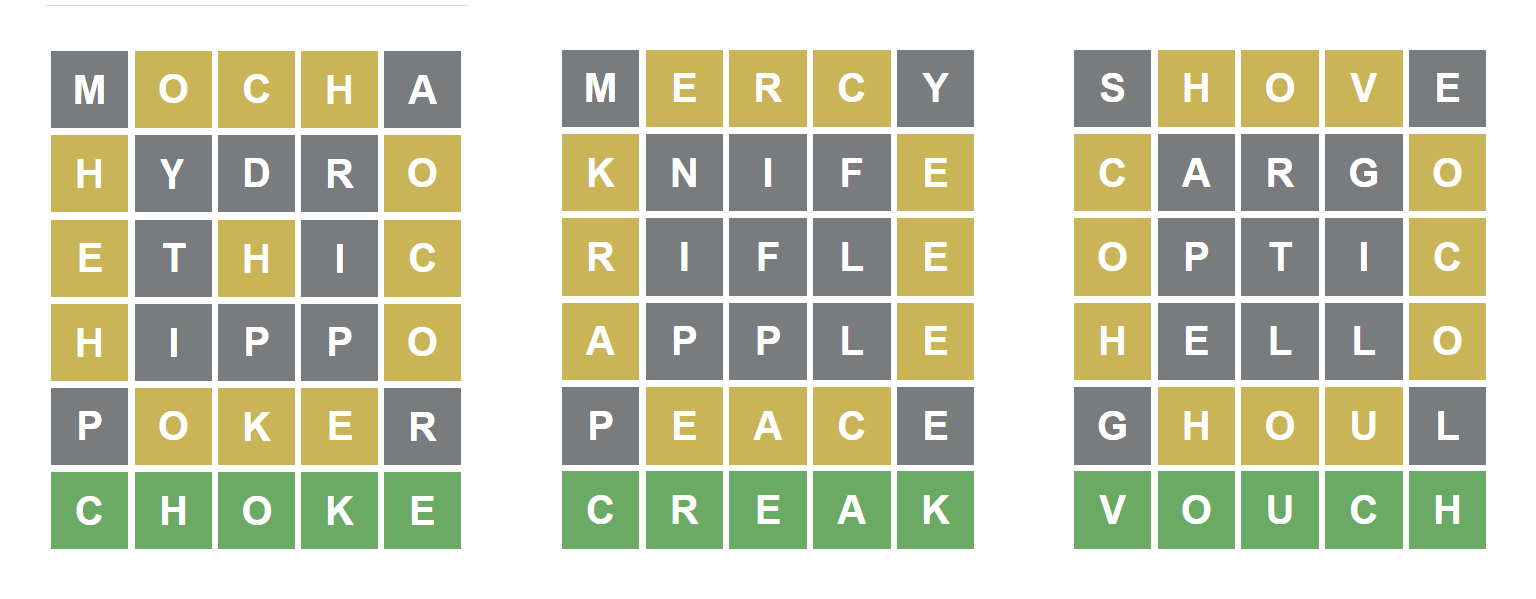
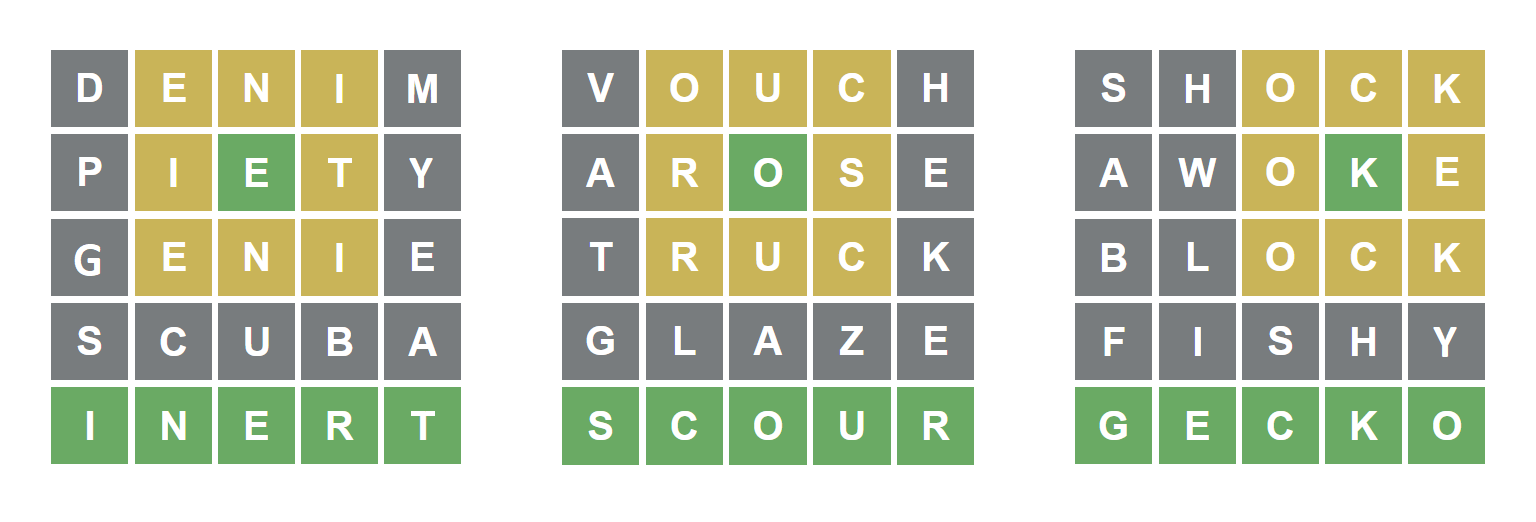
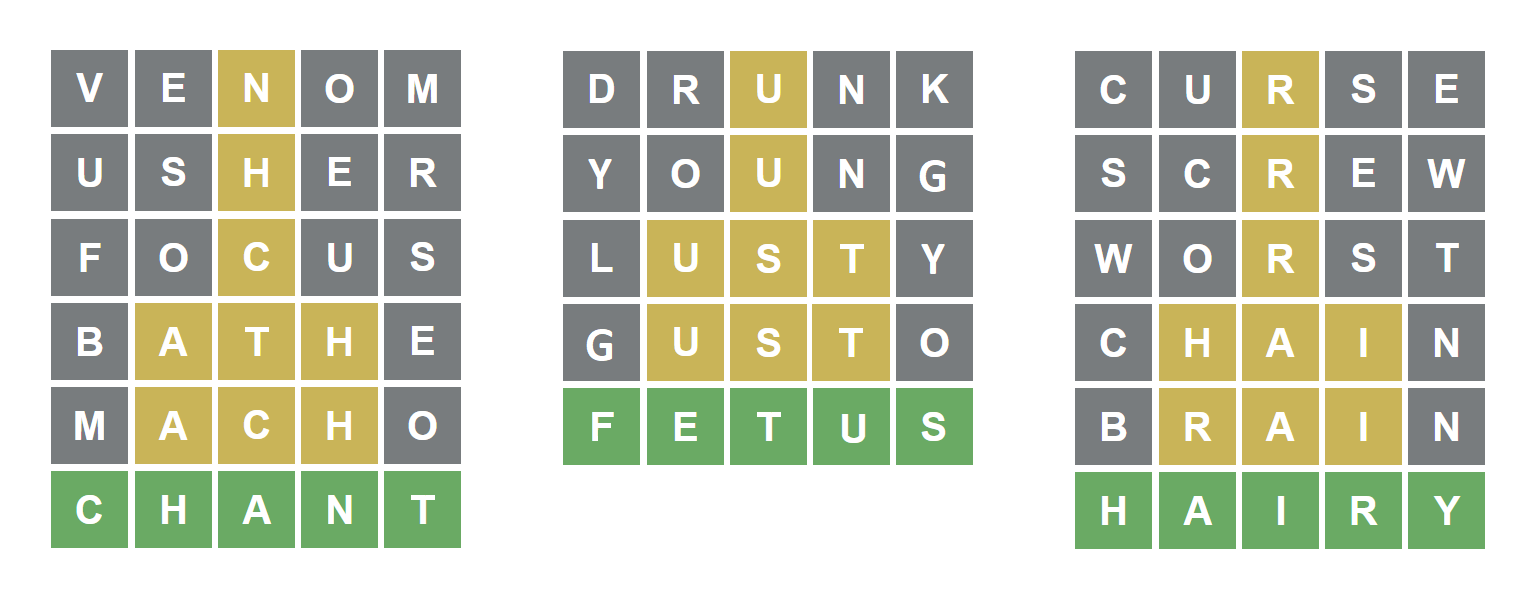
Hard Mode
I find the Wordle Art approach fun because it adds some opportunities for creative thinking beyond the narrow confines of guessing each day's answer. But if you'd like to head in the opposite direction, Wordle has a "hard mode," which eliminates certain types of creating thinking and turns Wordle into more of a pure guessing game.
When you select Hard Mode, Wordle enforces a rule that "any revealed hints must be used in subsequent guesses." Does that make the game harder, or just dumber? Let's consider a typical example.
Suppose that today's Wordle answer is STORE, and you have a very lucky first guess of STOIC. Three green squares! After only one guess, you have nearly solved the puzzle. Or have you?
Based on what we know from that first guess, there are 14 possible answers: the words that start with STO and don't include an I or a C. These words: stool, stout, stove, story, stomp, stood, stork, stony, storm, stole, stoke, stone, stoop, and store.
So let's suppose you guess STOMP next. OK, the response to that tells us that M and P are not in the answer. So there are now 12 possible answers: stool, stout, stove, story, stood, stork, stony, storm, stole, stoke, stone, or store.
Five of those answers include an E, so for your next guess let's suppose you go with STOVE. Four green squares! Now you know that the answer is a word of the form S-T-O-?-E. There are only four possibilities (stole, stoke, stone, or store), and you have three guesses left to solve the possible.

If you're not playing in Hard Mode, you can use some creative strategy to solve the puzzle in exactly two more guesses. The answer will contain one of the letters L, K, N, or R, so you can play the word LONER to find out which one. The yellow R in the final position tells us that R is in the answer, so you can now play STORE knowing with certainty that this is the answer.
In Hard Mode, you're not allowed think creatively or strategically, because you must play all of the letters that you've already identified. Hard Mode won't let you play LONER, because it doesn't contain an S or a T. So you're forced to engage in a mindless guessing game, trying each of the words that start with STO and and with E. If your next three guesses happen to be STOLE, STONE, and STOKE, you'll fail to solve the puzzle.
Hard Mode or not, Wordle Art or not, know the answer or not, whatever. Do whatever seems fun at the moment. If you're not having fun, you're doing it wrong!